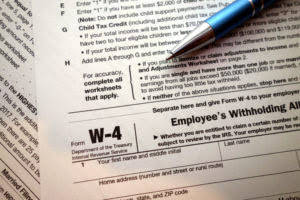
The money in a dormant account remains in the account, but it may be subject to fees or penalties. In some cases, the financial institution may turn over the funds to the state as unclaimed property. When it comes to managing inactive and dormant accounts, customer communication is a crucial aspect that must be considered.
- Inactive accounts are a great way for hackers to quietly probe without alerting anyone.
- The amount of time that a plaintiff has to collect on a civil judgment will depend on the laws of a particular jurisdiction.
- When it comes to managing inactive and dormant accounts, customer communication is a crucial aspect that must be considered.
- Hackers, much like robbers, often look for the easiest and quietest way in.
- Organizations must introduce the proper technical processes and department communication to remediate the risk of inactive accounts in Active Directory.
- Whether it’s a result of an employee leaving or changing positions, if organizations don’t take the necessary steps to close these entry points, they will end up with a vector for attack.
#BHEU: Social Engineer Shows How to Get Easy Cash
Companies should have a clear policy on how long they retain customer information and what happens to it after that period. This policy should be communicated to customers during the onboarding process, and customers should have the option to opt-out of data retention if they wish to do so. A savings account, checking account, investment account, brokerage account, and pension fund account can all be affected by account stale dormant meaning activity.
- Dormant, abandoned, and unclaimed accounts are ones that have no activity for a specific period of time.
- Customer support teams can play a pivotal role by reaching out proactively to offer assistance or gather feedback on why the user disengaged.
- If the stale check is returned for any reason, then a person’s bank may charge a fee for returning the check to the person.
- By addressing the issue of stale accounts proactively, organizations can not only reduce costs and risks but also unlock new avenues for user re-engagement and growth.
- These actions may include visiting the bank in person or performing a transaction.
- This helps to keep customers informed about their account status and any upcoming actions that may be taken.
How to Reactivate a Dormant Account?
“Sikich” is the brand name under which Sikich CPA LLC and Sikich LLC provide professional services. The entities under the Sikich brand are independently owned and are not liable for the services provided by any other entity providing services under the Sikich brand. The use of the terms “our company”, “we” and “us” and other similar terms denote the alternative practice structure of Sikich CPA LLC and Sikich LLC.
How Current Events Have Changed Banking
- Some banks may deposit checks if they have reason to believe that the issuer is legitimate and the company has enough funds in its account to cover the check.
- A key (or account) could topple your entire kingdom, as other kingdoms or bandits (malicious actors) want to get into your kingdom to steal anything of value.
- From a security standpoint, these dormant profiles can become prime targets for malicious actors.
- Embarking on the journey of self-improvement is akin to constructing a complex edifice; it requires…
- No, you cannot transfer funds from your other bank account to a dormant bank account.
- Unreachable code is something that would never be executed because there is no flow control to reach the code.
Once your account https://www.bookstime.com/ is reactivated, you can resume using it as you did before. The length of time it takes for an account to become dormant varies depending on the financial institution and the type of account. In general, an account is considered dormant if there has been no activity for a certain period of time, usually between 6 months to 1 year. Customers should also be aware of the implications of having inactive or dormant accounts. Inactive accounts may still earn interest, but dormant accounts typically do not. Customers should also be aware of any minimum balance requirements that may apply to their accounts.
What does the state do with escheated property?

In either case, banks are under no obligation to accept a check once it is deemed stale. Some banks may do it, but they may charge a fee for depositing or cashing a stale check that is older than 6 months. The issuing bank’s unearned revenue stale check policy may not allow them to honor a business check if it is presented after the 90-day period. Depending on the circumstances, a bank may refuse to honor the check and will not allow the person to deposit or cash the check. Financial institutions, like banks, are responsible for reporting unclaimed property to the state after a certain amount of time. Uncashed checks are those that the payer has written but the payee has not yet cashed or deposited.

Unclaimed property and escheatment laws
Monitor the status of all your checks effortlessly with our Stale Check Manager. By consolidating all the information in one place, you can quickly identify outstanding checks that require attention and take prompt action, mitigating compliance risks. You have to make a good-faith effort to contact the property owner to ensure they can claim it.


